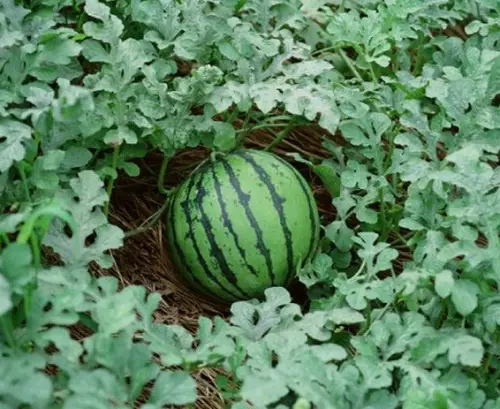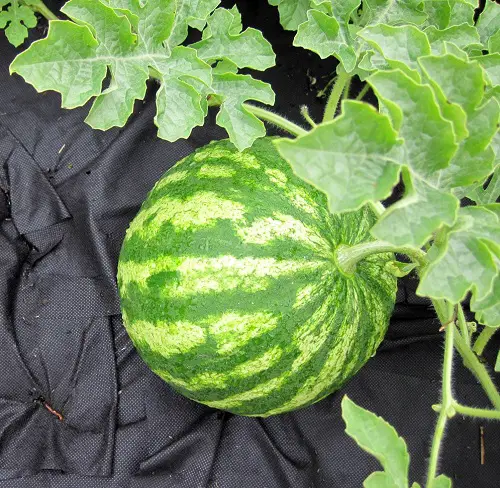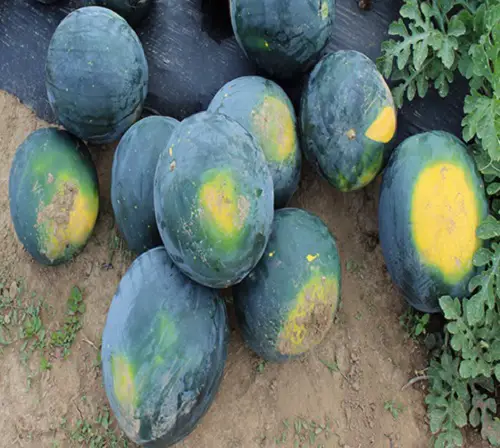Here are the top tips and tricks on How to Pick a Good Watermelon to ensure you get the tastiest and juiciest of the lot!
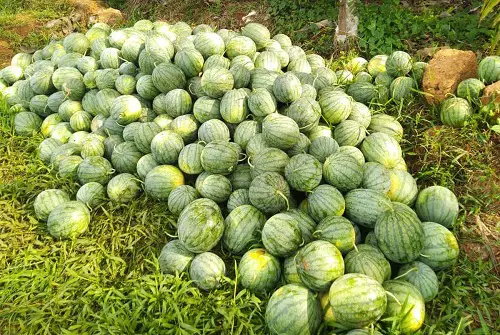
By following these tips and tricks, you can ensure that you’re selecting a sweet and juicy watermelon that will satisfy your taste buds. Read on to learn How to Pick a Good Watermelon!
Is Watermelon a Fruit or a Vegetable? Find out
Tips to Pick a Good Watermelon
1. Lift it Up to See if it is Heavy
The first step in picking a good watermelon is to lift it up and check its weight. A ripe watermelon should feel heavy for its size, which is a good indication that it is full of juice and has matured properly.
If the watermelon feels light or hollow, it may be underripe or overripe, and the flesh inside may be dry or tasteless. When lifting the watermelon, make sure to use both hands and lift it from the bottom, as this will give you a better idea of its weight.
2. Look for a Uniform Shape
A good watermelon will have a symmetrical shape, which means that it should be round or oval without any lumps or bumps.
Avoid watermelons that are misshapen or have irregularities, as they may not be ripe or could have been damaged during the growing process. A uniform shape indicates that the watermelon has grown evenly and has reached maturity.
3. Check the Field Spot
Another important tip for picking a good watermelon is to check the field spot. The field spot is the area of the watermelon that was resting on the ground while it was growing.
A ripe watermelon should have a creamy yellow or orange-colored field spot, which indicates that it has had enough time to ripen in the sun. If the field spot is white or green, it may mean that the watermelon is not yet ripe or was picked too early.
Also, make sure the field spot is not too large or too small, as this could be an indication of an overripe or underripe watermelon.
4. Inspect the Color of the Skin
Another important tip for picking a good watermelon is to inspect the color of its skin. A ripe watermelon will typically have dark green skin that is dull and not shiny.
Look for any stripes or markings on the skin, as these can be a sign of proper ripening. Avoid watermelons with shiny or light-colored skin, as these may not be fully ripe.
However, keep in mind that some watermelon varieties have a lighter skin color, so it’s important to know the specific variety you are looking for.
5. Use the Tapping Technique
The tapping technique is a popular way to determine if a watermelon is ripe or not. To use this method, gently tap the watermelon with your knuckles and listen for a deep, hollow sound.
If the sound is dull or flat, it could mean that the watermelon is underripe or overripe.
Learn about Growing Watermelons in Containers
6. Check Firmness

Check the firmness of the watermelon by pressing it gently. A ripe watermelon should feel firm but not hard, with a slight give when you press on it.
If the watermelon is too soft or mushy, it may be overripe or even spoiled. Avoid watermelons with any soft spots or bruises, as these can indicate damage or decay.
How to Spot a Damaged or a Spoiled Watermelon?
1. Dark Spots

One way to spot a damaged or spoiled watermelon is to look for dark-colored spots on its skin. These spots can be a sign of bruising or other damage that occurred during transportation or storage.
While a few small spots may not affect the quality of the fruit, larger or more numerous spots could indicate a problem.
2. Water Soaked Flesh
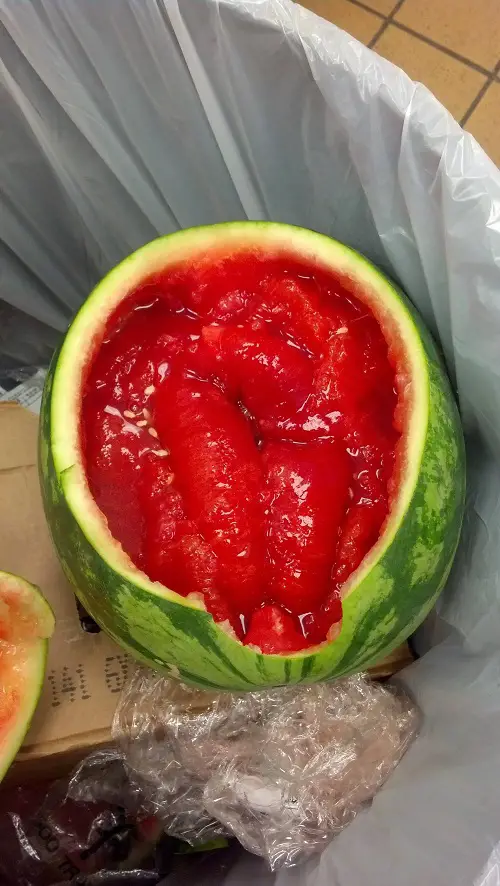
Another sign of a spoiled watermelon is water-soaked flesh. This can occur when the watermelon has been sitting in a damp or humid environment for too long.
The flesh may appear soft or mushy, and there may be visible water droplets on the surface.
3. Target Cluster
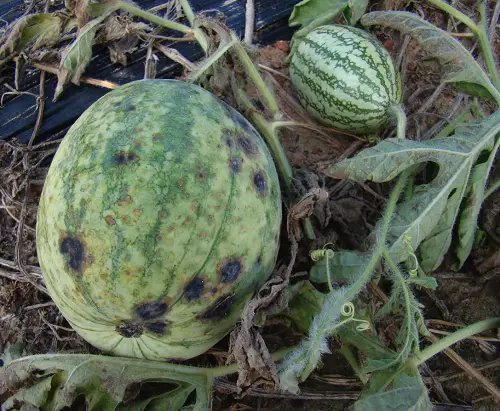
A target cluster is a group of small, dark spots that can appear on the surface of a watermelon. This is caused by a fungal infection and is a sign that the fruit is spoiled.
Avoid any watermelons with a target cluster, as the infection can spread quickly and affect the entire fruit.
Here are the Best Yellow Watermelons
4. Rind Worm Injury
Rind worm injury is a type of damage caused by insect larvae that feed on the watermelon rind. The damage can appear as small, irregular holes or tunnels on the surface of the fruit.
While this type of damage may not affect the quality of the flesh, it can be a sign of other problems and should be avoided.
5. Internal Rind Spots
Internal rind spots are brown or black spots that appear inside the watermelon. These spots are caused by a fungal infection and can indicate that the fruit is spoiled.
Cut open the watermelon before buying to check for any internal rind spots.
6. Sour or Tangy Smell
A sour or tangy smell is a sure sign that a watermelon is spoiled. If you detect any unusual odors coming from the watermelon, avoid buying it.
A ripe watermelon should have a sweet, fruity smell, so any off-putting smells should be cause for concern.
Watermelon Harvesting Tips
- Look for one that is symmetrical, has a dull color, and sounds hollow when tapped. You can also tell if a watermelon is ripe by the curly tendril on the stem. If it’s dry and brown, the watermelon is ready for harvest.
- Cut the watermelon from the vine. Use a sharp knife to make a clean cut.
- Take the watermelon off the vine. Use your hands to gently lift the watermelon off the vine and into your arms.
- Wash the watermelon. Use clean water and a vegetable brush to remove any dirt and debris from the watermelon.



